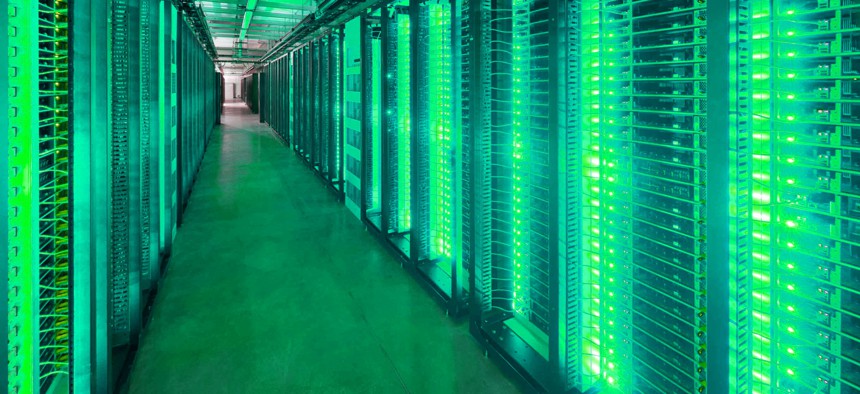Eco-friendly data centers key to sustainable enterprises

GettyImages
Climate change – and the availability of water and renewable and locally generated energy -- is driving interest in carbon-neutral data centers.
Sustainability is top of mind in general, but eco-friendly data centers will be a key trend to watch in 2022.
Efforts to make data centers sustainable aren’t new, said Rob Brothers, program vice president for data center and support services at IDC, but they have moved into the spotlight.
“I think it’s definitely coming more towards the forefront now as we begin to firsthand experience climate change,” Brothers said. “I think it’s also generational. The younger generation wants to do business with companies that are more ecofriendly and sustainable.”
Several data center vendors, including Equinix, Digital Realty Trust and QTS, have been looking at ways to use liquid cooling and immersion, and water, solar and other renewable resources, he said.
“What we’re seeing in a lot of the [requests for proposals] by enterprises is that there has to be some sustainable goals or matrices they want to see because enterprises themselves need to be sustainable,” Brothers said. “It’s a domino effect. If you have enterprises looking to be more sustainable [and] those competitions are guided by how ecofriendly they are or how sustainable or how carbon-neutral they can become, they’re going to put the same constraints on where they’re buying their resources.”
Another growing approach is a modular design in which data centers start physically smaller and increase in size based on need, rather than starting as a 200,000-square-foot place at once. “The great thing about these modular designs is that they work well for modernizing a data center,” Brothers said. That means retrofitting the buildings to be greener rather than constructing new ones, which brings its own environmental concerns.
Vertiv, which provides critical digital infrastructure and continuity solutions, identified other strategies in its list of data center trends to watch next year. For instance, it predicts that organizations will use a digital solution that matches energy use with 100% renewable energy and operates on round-the-clock sustainable energy.
“Fuel cells, renewable assets and long-duration energy storage systems, including battery energy storage systems (BESS) and lithium-ion batteries, all will play a vital role in providing sustainable, resilient and reliable outcomes,” according to a Vertiv statement. “Thermal systems that use zero water are in demand, and we will see refrigerants with high global warming potential (GWP) phased down in favor of low-GWP refrigerants.”
Both Brothers and Vertiv noted that organizations are becoming more thoughtful about the physical location of data centers in an effort to avoid areas prone to extreme weather. “Are you going to build a data center in Louisiana, in the New Orleans area? Probably not,” he said as an example.
Other factors, including the availability of water and renewable and locally generated sustainable energy, are also coming into play, according to Vertiv.
Although there are some sustainable data center efforts afoot, Brothers said regulation would help. For instance, Equinix, Amazon, Facebook and Microsoft each have their own data center sustainability goals, but they’re not consistent or cohesive, so there is no way to measure the efficiency, he said.
“If we don’t have a particular way for everybody to measure themselves the same exact way, how do we know it’s not greenwashing?” Brothers said. Greenwashing is making false or misleading claims about environmental efforts. “If I’m self-regulating, I can measure what I want to measure and report upon that, and I’m only going to take the good measurements.”
He points to Europe’s Climate Neutral Data Centre Pact as a model the United States should consider adopting. Launched at the beginning of 2021, the pact comprises cloud and data center operators that have presented the European Union with 19 proposals aimed at climate neutrality by 2030.
In the U.S., the Energy Department’s Federal Energy Management Program “helps agencies construct and maintain energy-efficient data centers by providing resources,” its website says. A search of FEMP’s case studies results in 13 related to data centers. For instance, the Thomas Jefferson National Accelerator Facility put two computing systems in one area, reducing the power usage effectiveness (PUE) to 1.27 from more than 2, and Sandia National Laboratories installed a liquid cooling system for its 650-kilowatt-per-hour Attaway supercomputer.
FEMP cites a 2014 study that estimated that data centers in the United States consume about 70 billion kilowatt hours, or 1.8% of total U.S. electricity consumption. But in 2013, the Natural Resources Defense Council predicted that data center electricity consumption would reach about 140 billion kilowatt hours annually by 2020, emitting nearly 100 million metric tons of carbon pollution per year.
PUE – how efficiently a data center uses energy – is an outdated measurement, Brothers said.
“We need to change the way we measure our sustainability and PUE is just very integrated,” he said. “I do think that there needs to be changes industrywide. Maybe government can play a role in promoting that.”
Stephanie Kanowitz is a freelance writer based in northern Virginia.





